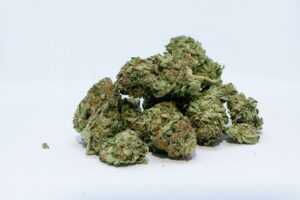Welcome to the nuanced world of indoor cannabis cultivation, where the mastery of scent is both an art and a science. As an indoor grower, you embark on a journey that goes beyond simply producing cannabis; you delve into the intricate process of cultivating a garden that is rich in aroma and flavor. This guide is tailored for enthusiasts like you, who understand that the essence of high-quality cannabis lies not just in its potency or visual appeal, but in the complex symphony of scents it emits.
Indoor cannabis cultivation presents unique challenges and opportunities, especially when it comes to managing and enhancing the plant’s natural aromas. Unlike outdoor cultivation, where plants are subject to the whims of nature, indoor growing allows you to meticulously control the environment, influencing the development of those all-important aromatic compounds known as terpenes. These organic compounds are the lifeblood of cannabis fragrance, shaping the sensory profile of each strain and contributing to its overall appeal and effects.
In this comprehensive guide, we will explore the fascinating world of cannabis aromas within the realm of indoor cultivation. You’ll learn about the diverse array of terpenes present in cannabis, each with its unique scent and influence on the plant’s character. We’ll discuss common scents associated with various strains, and how these can be accentuated or modulated in an indoor setting. Understanding these aromatic nuances is crucial, as the scent of cannabis not only enhances the user’s experience but also serves as an indicator of the plant’s health and the quality of your cultivation efforts.
Terpenes 101: Understanding the Aroma in Indoor Cultivation
The Role of Terpenes in Small-Scale Grows
In the confined spaces of indoor cultivation, understanding terpenes—the aromatic compounds in cannabis—is crucial. For small-scale growers, recognizing how different terpenes contribute to the overall scent profile of your plants can significantly enhance the quality of your indoor grow. This knowledge is not only essential for producing aromatic buds but also for maintaining a pleasant indoor environment.
Key Terpenes and Their Scents
Familiarize yourself with key terpenes like myrcene, which imparts earthy tones, limonene with its citrusy aroma, and pinene which adds a touch of pine. These terpenes not only determine the fragrance of your plants but also influence their effects, making your understanding of them vital for tailoring your grow to specific preferences.
Impact of Indoor Environment on Terpenes
Indoor conditions such as lighting, temperature, and humidity have a direct impact on terpene production. Understanding how to manipulate these factors can enhance the aromatic qualities of your cannabis, turning a small-scale grow into a terpene-rich oasis.
Identifying Aromas: What to Expect from Your Indoor Plants
Common Scents in Indoor Strains
Indoor strains may exhibit a range of scents, from the pungent, musky notes of indica varieties to the sweet, fruity undertones of sativas. Recognizing these aromas can guide you in selecting strains that not only thrive indoors but also suit your scent preferences.
Managing Strong Odors
Strong odors are a consideration in indoor grows. Strains with particularly pungent aromas may require odor control measures such as carbon filters or sealed growing environments to maintain discretion and comfort.
Scent as a Quality Indicator
In a small-scale indoor setup, the aroma of your plants can serve as a reliable indicator of their health and maturity. A robust, well-defined scent often signifies successful grow, alerting you to the right time for harvesting.
Enhancing Aroma: Tips for Indoor Growers
- Optimizing Growing Conditions
Control your grow room’s environment to favor terpene production. Temperature, humidity, and light cycles should be carefully managed to mimic the natural conditions that boost terpene synthesis in the plant. - The Importance of Strain Selection
Choose strains known for their aromatic qualities. Research and select genetics that not only adapt well to indoor growing conditions but also have a reputation for rich, complex aromas. - Mastering the Art of Curing
Proper curing is especially important in small-scale grows. This process allows the full spectrum of terpenes to develop, resulting in more pronounced and nuanced scents. Invest time in learning and perfecting your curing technique to maximize the aromatic potential of your harvest.
Odor Control and Safety in Indoor Growing
- Implementing Effective Odor Control
Utilize methods like carbon filters or exhaust systems to manage the intense aromas that can emanate from a thriving indoor grow. This is not just about masking scents but also about creating a comfortable and discreet growing space. - Ensuring a Safe Growing Environment
In addition to odor control, focus on ventilation to prevent mold and mildew, which can affect both the scent and health of your plants. Also, consider personal protective equipment when handling plants with strong aromas to avoid irritation. - Environmental and Legal Considerations
Be mindful of the legal implications of strong cannabis odors in your area. Additionally, strive for sustainable practices in odor management to minimize your environmental footprint.
Enhancing Cannabis Aroma: Advanced Cultivation Techniques
Proper Drying and Curing Techniques
The Art of Drying:
- Air Drying Mastery: Air drying, the most common method, requires careful attention. Ensure branches are spaced evenly to prevent moisture buildup and potential mold. This spacing helps maintain a stable microclimate around each bud, crucial for even drying.
- Environment Control: Control the drying environment meticulously. A slightly cooler temperature preserves terpenes, enhancing aroma. Humidity management is equally vital; too high invites mold, and too low accelerates drying, risking terpene loss.
Curing with Precision:
- Moisture Monitoring: Regularly check the moisture level during the curing process. Buds should feel dry on the outside but retain some internal moisture.
- Aroma Preservation: A well-executed curing process preserves and enhances the aroma. Poor curing can lead to the loss of the delicate terpenes responsible for the plant’s fragrance.
Managing Mold During Flowering Stage
Environmental Vigilance:
- Humidity Control: Keeping humidity levels around 45-50% is pivotal. This balance prevents bud rot and encourages trichome production.
- Airflow and Light Exposure: Strategic defoliation ensures that larger buds receive enough airflow and light, crucial for aroma development and mold prevention.
Avoiding Bacterial Growth in Curing
Curing and Hygiene:
- Hygrometer Use: Utilize hygrometers to monitor and adjust the humidity levels in curing jars. This helps in avoiding the growth of bacteria which can produce off-putting smells.
- Bud Inspection: Regularly inspect the buds during curing for any signs of moisture or bacterial growth. Immediate action is necessary if any signs are detected to preserve the integrity and aroma of the buds.
Impact of Heat on Aroma
Temperature Management:
- Avoiding High Temperatures: Maintain temperatures in the 70-80°F range during the flowering stage. This is essential to prevent the degradation of terpenes and cannabinoids that contribute to the aroma and potency.
- Consistent Monitoring: Continuous monitoring and adjusting of temperatures throughout the growth, drying, and curing stages ensure the preservation of the plant’s aromatic profile.
Avoiding Contaminants and Chemicals
Cultivation Best Practices:
- Chemical-Free Growth: Refrain from applying pesticides or chemicals that could contaminate the buds. Even safe options should be used judiciously.
- Nutrient Management: Overloading plants with nutrients can lead to nutrient burn, affecting both taste and smell. Utilizing bloom nutrients appropriately during the flowering stage can enhance the final aroma profile of the buds.




